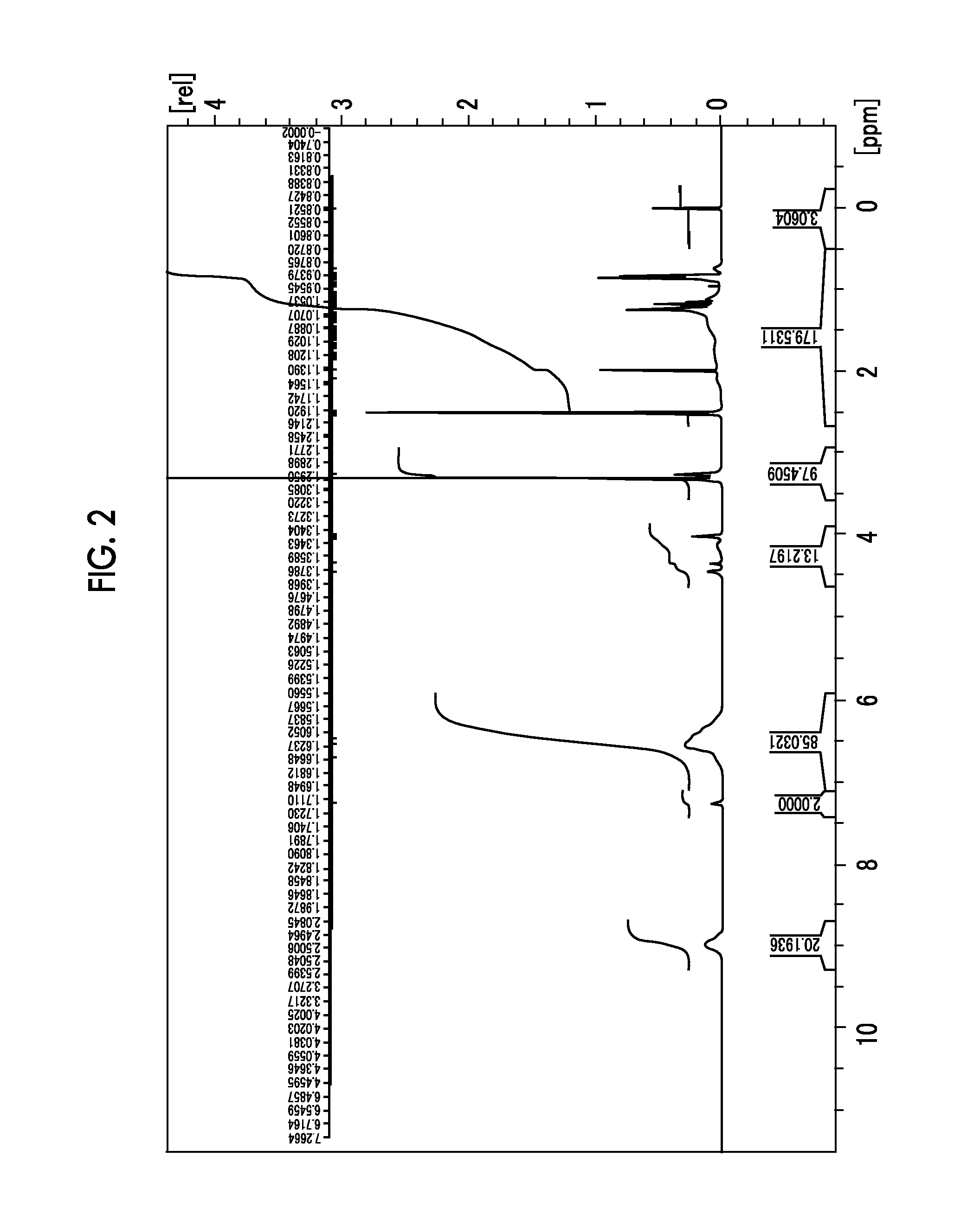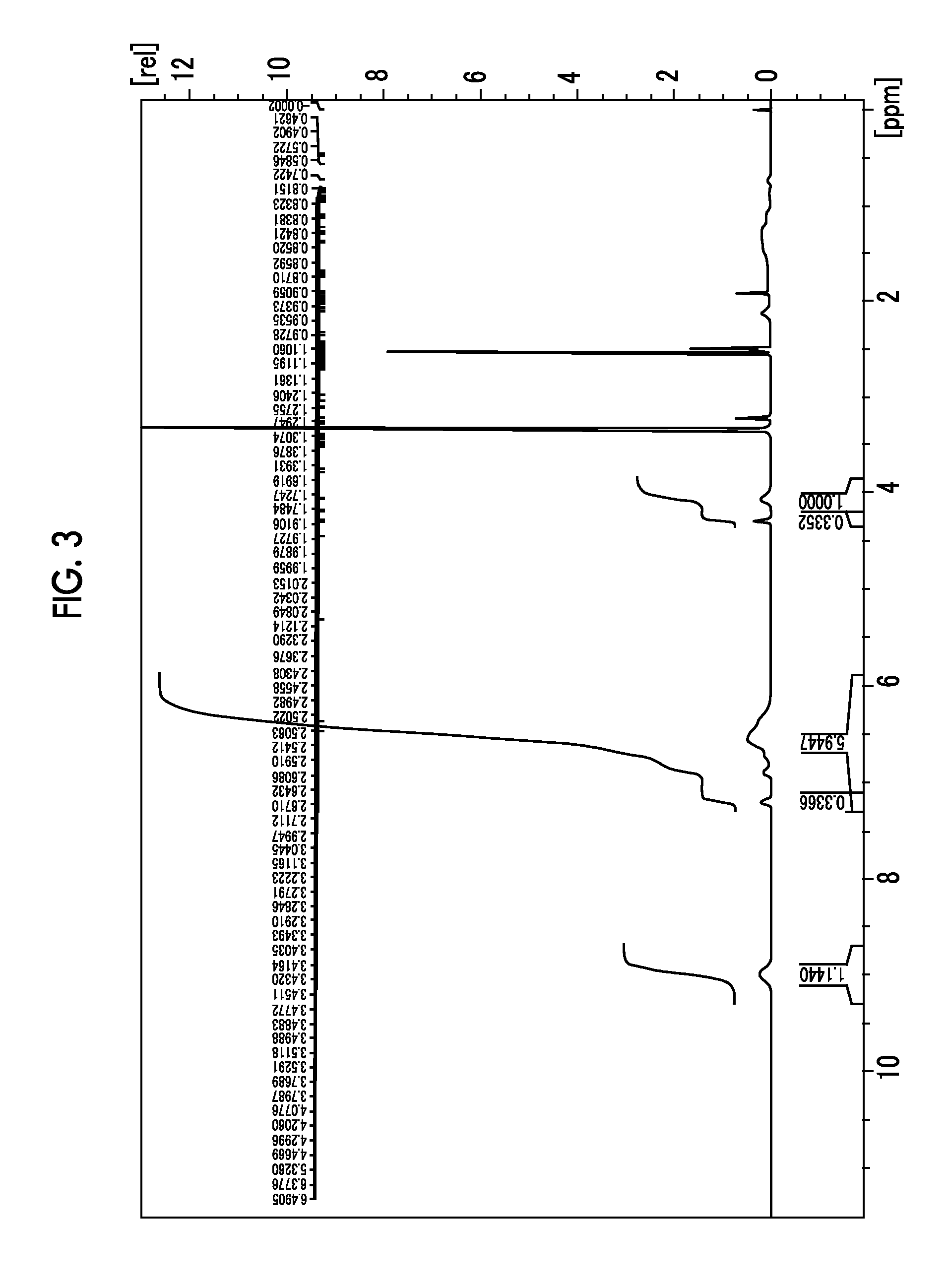Resin composition and pattern forming method using the same
a composition and pattern technology, applied in the direction of photosensitive materials, instruments, photomechanical equipment, etc., can solve the problems of reduced resist thickness, insufficient dry etching resistance, and inability to obtain sufficient dry etching resistance, etc., to achieve high sensitivity, high resolution, and high resolution
- Summary
- Abstract
- Description
- Claims
- Application Information
AI Technical Summary
Benefits of technology
Problems solved by technology
Method used
Image
Examples
synthesis example 1
Synthesis of Polymer Compound (A1)
[0340]The polymer compound (A1) shown in Table 1 below was synthesized as follows.
[0341](Synthesis of Compound (1a-2))
[0342]35 g of 2,6-bis(hydroxymethyl)-p-cresol (1a-1) manufactured by Tokyo Chemical Industry Co., Ltd. was dissolved in 400 mL of methanol. 3.6 g of a 45% aqueous sulfuric acid solution was added dropwise thereto, followed by stirring at 50° C. for 5 hours. After the completion of the reaction, the reaction liquid was returned to room temperature, and then in an ice bath, sodium carbonate was added to the reaction liquid while stirring, followed by filtration through Celite. The filtrate was concentrated and then transferred to a separating funnel. 200 mL of each of distilled water and ethyl acetate was added thereto to carry out extraction, and the aqueous layer was removed. Thereafter, the organic layer was washed with 200 mL of distilled water five times, and the organic layer was concentrated to obtain 37 g of the compound of (1a...
synthesis example 2
Synthesis of Polymer Compound (A2)
[0349]The polymer compound (A2) shown in Table 1 below was synthesized as follows.
[0350](Synthesis of Compound (2a-2))
[0351]16 g of 2,4,6-tris(methoxymethyl)phenol (2a-1) was dissolved in 200 mL of dimethyl sulfoxide. 39.09 g of potassium carbonate and 53.13 g of dibromoethane were added thereto, followed by stirring at 40° C. for 4 hours. To the reaction liquid were added 100 mL of ethyl acetate and 100 mL of distilled water, followed by transferring to a separating funnel, and the aqueous layer was removed. Thereafter, the organic layer was washed with 200 mL of distilled water three times, and the solvent in the organic layer was evaporated under reduced pressure. The obtained material was purified by silica gel column chromatography to obtain 17.7 g of a compound (2a-2).
[0352]1H-NMR (d6-DMSO: ppm) δ: 3.28 (3H, s), 3.33 (6H, s), 3.83 to 3.80 (2H, m), 4.15 to 4.12 (2H, m), 4.59 (2H, s), 4.68 (4H, s), 7.27 (2H, s).
[0353](Synthesis of Polymer Compou...
synthesis example 3
Synthesis of Polymer Compound (A3)
[0355]The polymer compound (A3) shown in Table 1 below was synthesized as follows.
[0356](Synthesis of Polymer Compound (A3))
[0357]5 g of poly(p-hydroxystyrene) (VP2500) manufactured by Nippon Soda Co., Ltd. was dissolved in 30 g of dimethyl sulfoxide. 1.7 g of potassium carbonate and 2 g of the compound (3a) were sequentially added thereto, followed by stirring at 60° C. for 2 hours. After the completion of the reaction, the reaction liquid was returned to room temperature, and 50 mL of each of ethyl acetate and distilled water was added thereto. The reaction liquid was transferred to a separating funnel and the aqueous layer was removed. Thereafter, the organic layer was washed with 50 mL of distilled water five times, the organic layer was concentrated, and the concentrate was added dropwise to 500 mL of hexane. The powder was filtered, then separated, and dried in vacuo to obtain 5.2 g of a polymer compound (A3) including the repeating units abov...
PUM
| Property | Measurement | Unit |
|---|---|---|
| dispersity | aaaaa | aaaaa |
| thickness | aaaaa | aaaaa |
| dispersity | aaaaa | aaaaa |
Abstract
Description
Claims
Application Information
 Login to View More
Login to View More - R&D
- Intellectual Property
- Life Sciences
- Materials
- Tech Scout
- Unparalleled Data Quality
- Higher Quality Content
- 60% Fewer Hallucinations
Browse by: Latest US Patents, China's latest patents, Technical Efficacy Thesaurus, Application Domain, Technology Topic, Popular Technical Reports.
© 2025 PatSnap. All rights reserved.Legal|Privacy policy|Modern Slavery Act Transparency Statement|Sitemap|About US| Contact US: help@patsnap.com



